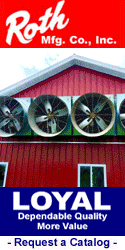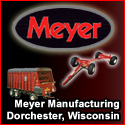 |
 |

|
|
|
South Dakota Ag News Headlines |
 |
End-of-Year Accounting: Just What Do You Have?
South Dakota Ag Connection - 09/27/2016
Measuring the farm's economic success can be accomplished by annually comparing the balance sheet, income statement, statement of cash flow, and statement of owners' equity.
However, as Heather Gessner, SDSU Extension Livestock Business Management Field Specialist points out, comparing these financial statements can only be done if they are completed at a similar time of the year, and if they are completed accurately and
consistently.
"Accuracy of inventory counts and valuation of all assets and liabilities are critical components of all financial statements. Taking inventory is usually more of a time consuming issue than a difficult task," Gessner said.
She added that proper identification of crops and livestock is important. "Value is assigned to each category. Identify crops stored for sale compared to crops intended for feed. Classify livestock by type, use, weight and owned versus purchased. For example,
500 pound purchased feeder steers versus raised mature cows," she said.
There are different methods available to value inventory assets, and depending on the asset, more than one may be used.
These methods include:
Historical Cost Method - the cost to purchase the asset, adjusted for depreciation
Current Market Value Method - the value of the asset if it was liquidated
Net realizable Value Method - the value, minus direct costs, expected to be received for the asset
Discounted Future Cash Flow Method - Assets: expected cash inflow from an asset minus present value of direct costs. Liabilities: expected cash outflow required to pay off the liability.
Choosing which method to use is up to the individual. Two things Gessner encourages agriculture producers to keep in mind when making the decision are:
Is the method relevant? Does the information provide feedback or predictive value, is it timely?
Is it reliable? Reliability: is the information representative of the asset verifiable and neutral?
Gessner said that most agriculture producers can utilize the historical cost and current market value methods. These two values are in the two-column balance sheet.
"There are pros and cons to each method and many times both the cost and market values are included since the two numbers provide different information about the operation," she said.
Market values are generally easier to determine for many assets, compared to determining the cost to produce the crop or livestock on the balance sheet.
"Market also provides a true perspective of the producers' current asset values if all assets were liquidated," Gessner said. "It provides an accurate picture of the financial position and financial performance of the operation on the day the balance sheet was
created."
Cost values may be preferred for some assets since estimating the asset market value may not be accurate, and prevents fluctuations in the owners' equity due to unrealized gains or losses when there is not a sale of the assets. "The fluctuation causes inconsistent
and often inaccurate information about the owners' equity and true financial position," she said.
Gessner pointed to the Farm Financial Standards Council (FFSC) provided the following guidelines to aid the decision making process as a helpful tool agricultural producers may consider utilizing.
"Regardless of the method used to value inventory, the first step is to create the list. Measuring and monitoring assets and liabilities will provide information required for good management of your operation. With accurate accounting information, effective
management decisions can be made," Gessner said.
Other South Dakota Headlines
|
|
 |


|
 |
|
Copyright © 2024 - Farms.com. All Rights Reserved. |
 |
|